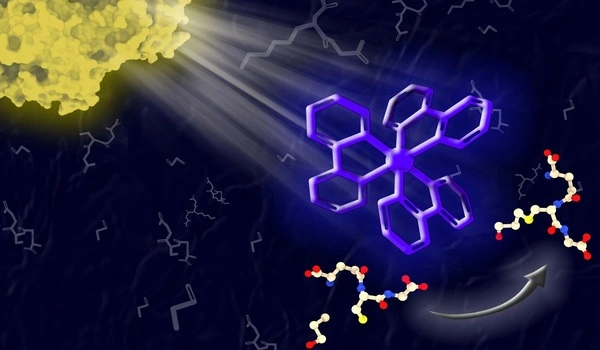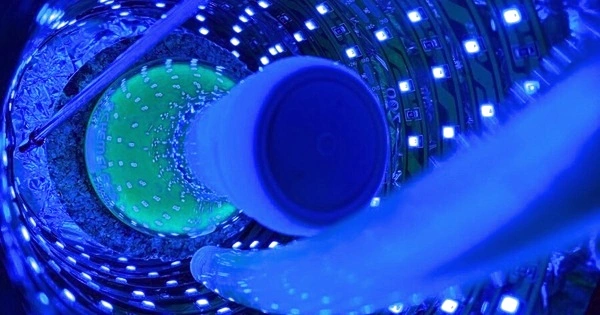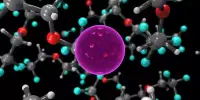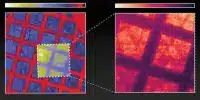Chemists created a new photoredox catalyst that could make it easier to incorporate light-driven reactions into continuous flow manufacturing processes. Polymer catalysts could be utilized to coat tubing and execute chemical reactions on reactants as they flow through the tube.
Light-driven chemical reactions are a significant tool for scientists developing new methods of producing medicines and other important molecules. Photoredox catalysts are required to absorb light and transmit the energy to a chemical reaction in order to harness this light energy.
MIT researchers have developed a new type of photoredox catalyst that could make it easier to incorporate light-driven reactions into manufacturing processes. Unlike most existing photoredox catalysts, the new class of materials is insoluble and hence may be reused. Such catalysts could be employed to coat tubing and execute chemical reactions on reactants as they flow through the tube.
“One of the most difficult obstacles to overcome in order to use photoredox catalysis in production is the ability to recycle the catalyst. We expect that by being able to do flow chemistry with an immobilized catalyst, we will be able to give a novel method for performing photoredox catalysis on bigger scales” says Richard Liu, an MIT postdoctoral researcher and co-lead author of the current study.
The new catalysts, which can be tailored to perform a wide range of reactions, could also be put into other materials such as fabrics or particles.
Timothy Swager, the John D. MacArthur Professor of Chemistry at MIT, is the senior author of the paper, which appears today in Nature Communications. Sheng Guo, an MIT research scientist, and Shao-Xiong Lennon Luo, an MIT graduate student, are also authors of the paper.
One of the most difficult obstacles to overcome in order to use photoredox catalysis in production is the ability to recycle the catalyst. We expect that by being able to do flow chemistry with an immobilized catalyst, we will be able to give a novel method for performing photoredox catalysis on bigger scales.
Richard Liu
Hybrid materials
Photoredox catalysts work by absorbing photons and then using the light energy to power a chemical reaction, similar to how chlorophyll in plant cells receives solar energy and uses it to make sugar molecules.
Chemists have created two types of photoredox catalysts: homogeneous and heterogeneous catalysts. Homogeneous catalysts are often made up of organic dyes or light-absorbing metal complexes. These catalysts are simple to adjust to execute a specific reaction, but the negative is that they dissolve in the solution where the reaction occurs. This means they can’t be simply removed and reused.
Solid minerals or crystalline materials that form sheets or 3D structures, on the other hand, are heterogeneous catalysts. Because these materials do not degrade, they can be utilized repeatedly. These catalysts, however, are more difficult to tune in order to get the appropriate reaction.
The researchers chose to incorporate the dyes that make up homogeneous catalysts into a solid polymer to combine the benefits of both types of catalysts. The researchers repurposed a plastic-like polymer with microscopic pores they had previously produced for gas separations for this use. The researchers demonstrated that they could include approximately a dozen distinct homogenous catalysts into their new hybrid material in this investigation, but they believe it could work with many more.

“These hybrid catalysts have the recyclability and durability of heterogeneous catalysts, but also the precise tunability of homogeneous catalysts,” Liu says. “You can incorporate the dye without losing its chemical activity, so, you can more or less pick from the tens of thousands of photoredox reactions that are already known and get an insoluble equivalent of the catalyst you need.”
The researchers discovered that integrating the catalysts into polymers made them more efficient. One reason for this is because reactant molecules can be held in the pores of the polymer, ready to react. Furthermore, light energy may easily travel along the polymer to identify the reactants that are waiting.
Swager explains, “The novel polymers bind molecules from solution and efficiently preconcentrate them for reaction. Furthermore, the excited states can move quickly across the polymer. The combination of excited state mobility and reactant partitioning in the polymer allows for faster and more efficient reactions than are feasible in pure solution procedures.”
Higher efficiency
The researchers also demonstrated that they could control the physical features of the polymer backbone, such as thickness and porosity, depending on the application of the catalyst. They demonstrated, for example, that they could create fluorinated polymers that adhered to fluorinated tubing, which is commonly used in continuous flow manufacturing. Chemical reactants flow through a series of tubes while fresh components are introduced or other stages such as purification or separation are undertaken during this sort of manufacturing.
Currently, it is challenging to incorporate photoredox reactions into continuous flow processes because the catalysts are used up quickly, so they have to be continuously added to the solution. Incorporating the new MIT-designed catalysts into the tubing used for this kind of manufacturing could allow photoredox reactions to be performed during continuous flow. The tubing is clear, allowing light from an LED to reach the catalysts and activate them.
“The goal is to coat a tube with the catalyst so that you may flow your reaction through it while the catalyst remains in place. This manner, the catalyst is never present in the product, and you may achieve much better efficiency “Liu explains.
Catalysts could also be used to coat magnetic beads, making them easier to remove from a solution once the reaction is complete, or to coat reaction vials or fabrics. The researchers are currently working on adding a larger range of catalysts into their polymers, as well as designing the polymers to optimize them for various uses.
















